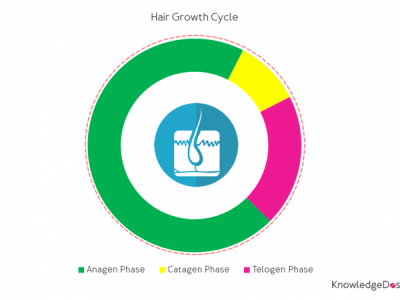Welcome to the drug allergy and cross-reactivity category for physicians and pharmacists. This section features links to clinical practice resources on managing drug allergies and cross-reactivity reactions to drugs such as penicillins, cephalosporins, sulfonamides, NSAIDs and opioids.
British Society for Allergy and Clinical Immunology guidelines for the management of drug allergy
- Source: bsaci.org
- Clinical Resource: Guideline
- Register to Access Content: No
International Consensus on drug allergy
The use of standardized systematic approaches for the diagnosis and management of drug hypersensitivity reactions carries the potential to improve outcomes and should thus be disseminated and implemented. Consequently, the International Collaboration in Asthma, Allergy and Immunology (iCAALL), formed by the European Academy of Allergy and Clinical Immunology (EAACI), the American Academy of Allergy, Asthma and Immunology (AAAAI), the American College of Allergy, Asthma and Immunology (ACAAI), and the World Allergy Organization (WAO), has decided to issue an International CONsensus (ICON) on drug allergy.
- Source: eaaci.org
- Clinical Resource: Position Paper
- Register to Access Content: No
Drug Allergy: An Updated Practice Parameter
These parameters were developed by the Joint Task Force on Practice Parameters, representing the American Academy of Allergy, Asthma and Immunology, the American College of Allergy, Asthma and Immunology, and the Joint Council of Allergy, Asthma and Immunology.
- Source: aaaai.org
- Clinical Resource: Practice Parameter
- Register to Access Content: No
This guideline covers diagnosing and managing drug allergy in all age groups. It aims to make it easier for professionals to tell when someone is having an allergic reaction, by specifying the key signs and patterns to look out for. It also makes recommendations on improving people’s understanding of their drug allergies, and ensuring these are recorded properly in their medical records.
- Source: nice.org.uk
- Clinical Resource: Guidance
- Register to Access Content: No
- Source: eaaci.org
- Clinical Resource: Position Paper
- Register to Access Content: No
- Source: eaaci.org
- Clinical Resource: Position Paper
- Register to Access Content: No
Drug Allergies
Adverse drug reactions (ADRs) are broadly divided into predictable (related to pharmacologic actions of the drug in otherwise normal individuals) and unpredictable reactions (related to individual’s immunological response and, on occasion, to genetic differences in susceptible patients). Drug allergy is a type of unpredictable reaction.
The term “drug hypersensitivity” refers to objectively reproducible symptoms or signs initiated by exposure to a drug at a dose normally tolerated by non-hypersensitive persons. “Drug allergy” refers to immunologically mediated drug hypersensitivity reactions. These may be either immunoglobulin E (IgE)–mediated (immediate) or non–IgE-mediated (delayed) hypersensitivity reactions.
- Source: worldallergy.org
- Clinical Resource: Summary
- Register to Access Content: No
Cross-reactivity of beta-lactam antibiotics
The purpose of this paper is to discuss the available data concerning the safety of administering cephalosporins, carbapenems,
and monobactams to penicillin-allergic patients.
- Source: baylorhealth.edu
- Clinical Resource: Journal Article
- Register to Access Content: No
Penicillin allergy cross-reactivity
- Roughly 10% of the population report allergy to penicillin
- Penicillin is a beta-lactam antibiotic and can therefore cross-react with other beta-lactam antibiotics
- Source: med.umkc.edu
- Clinical Resource: Reference Material
- Register to Access Content: No
“Sulfur allergy”
The term “sulfur allergy” is confusing and may lead to patients believing that they are allergic to all sulfur-containing medications or preservatives, and even to sulfur, an important building block of life. We are often asked, “Can a patient with a sulfur allergy have medication containing sulfur?” and, “What other drugs is the patient likely to be allergic to?” The aim of this bulletin is to clarify the term “sulfur allergy” and the allergies sometimes grouped together under this mantle; sulfonamide, sulfite and sulfate allergies.
- Source: medicinesinformation.co.nz
- Clinical Resource: Drug Information Service Bulletin
- Register to Access Content: No
‘Sulfur allergy’ label is misleading
The term ‘sulfur allergy’ is misleading and dangerous and should not be used. an allergy to a sulfonamide antibiotic may imply cross-reactivity with other sulfonamide antibiotics, but does not imply cross-reactivity with non-antibiotic sulfonamides or other drugs containing sulfhydryl or sulfate groups.
- Source: nps.org.au
- Clinical Resource: Journal Article
- Register to Access Content: No
Opioid Allergic Reactions
Patient reports of opioid “allergies” are common, most often due to symptoms of nausea, vomiting, itching, hypotension, or constipation. This Fast Fact will review signs, symptoms, and management options of opioid allergies and pseudo-allergies.
- Source: mypcnow.org
- Clinical Resource: Summary
- Register to Access Content: No
Opioids: Allergy vs. Pseudoallergy
This article briefly discusses the true opioid allergy versus pseudoallergy, opioid side effects, and alternative options to control pain.
- Source: uspharmacist.com
- Clinical Resource: Journal Article
- Register to Access Content: No
Opioid Allergies and Cross-reactivity
How many times have you had a patient with an allergy to codeine described as stomach upset? Or how about a rash with morphine (probably secondary to histamine release)?
- Source: umem.org
- Clinical Resource: Educational Pearl
- Register to Access Content: No
Q: Can fentanyl be prescribed for a patient allergic to codeine
A: Opioid analgesics are among the most commonly prescribed drugs in the United States. True allergic reactions to opioid analgesics are extremely rare, dependent upon antibody (usually IgE/IgG), and triggered by histamine and other mediators
- Source: duq.edu
- Clinical Resource: Pharmaceutical Information Centre Publication
- Register to Access Content: No
- Source: eaaci.org
- Clinical Resource: Position Paper
- Register to Access Content: No
The aim of this review prepared by a group of experts representing the EAACI/ENDA group and GA2LEN Network of Excellence is to present up-to-date information on the pathomechanisms and clinical spectrum of hypersensitivity reactions caused by NSAIDs. Additionally, practical recommendations for proper diagnosis and management of patients with NSAIDs hypersensitivity are proposed.
- Source: ga2len.net
- Clinical Resource: Review Article
- Register to Access Content: No
Cross-Reactivity of ACE Inhibitor–Induced Angioedema with ARBs
Angiotensin receptor blockers (ARBs) and angiotensin-converting enzyme (ACE) inhibitors are highly utilized classes of medications that affect the renin-angiotensin-aldosterone system (RAAS). Both have been shown to be beneficial in the treatment of disease states–such as hypertension, chronic heart failure, chronic kidney disease, and myocardial infarction–in which the RAAS system plays a significant role.
- Source: uspharmacist.com
- Clinical Resource: Journal Article
- Register to Access Content: No
- Source: uic.edu
- Clinical Resource: Frequently Asked Question
- Register to Access Content: No
‘Iodine allergy’ label is misleading
‘Iodine allergy’ is not an accurate label for patients who have had allergic reactions to iodinated radiological contrast media or iodinated antiseptics. Allergy to seafood has nothing to do with iodine content as it is caused by specific immunoglobulin E to proteins.
- Source: nps.org.au
- Clinical Resource: Journal Article
- Register to Access Content: No
Q: Is there a risk in using amiodarone in patients with iodine hypersensitivity?
A: Amiodarone is a popular drug for the treatment of supraventricular and ventricular arrhythmias. Each 200 mg tablet contains 75 mg (37.3%) of iodine. The product literature includes a contraindication to its use in patients with hypersensitivity to iodine. The question arises, what is iodine hypersensitivity?
- Source: duq.edu
- Clinical Resource: Pharmaceutical Information Centre Publication
- Register to Access Content: No
Q: Can a patient with an allergic reaction to one PPI be re-challenged with another drug in the same category?
A: Cross-reactivity among the proton-pump inhibitors (PPIs) has been documented in several case reports. With the exception of lansoprazole, the product labeling for each of these agents describes them as contraindicated in patients with known hypersensitivity to PPIs or other substituted benzimidazoles.
- Source: duq.edu
- Clinical Resource: Pharmaceutical Information Centre Publication
- Register to Access Content: No
- Source: bsaci.org
- Clinical Resource: Guideline
- Register to Access Content: No
Perioperative Allergic Reactions
Anesthesia represents a pharmacologically unique situation, during which patients are exposed to multiple foreign substances including anesthetics, analgesics, antibiotics, antiseptics, blood products, heparin, polypeptides, and intravascular volume expanders, which can produce immediate hypersensitivity reactions or anaphylaxis.
Since no preemptive therapeutic strategies exist, both vigilance of the attending clinicians to rapidly recognize and treat these reactions and subsequent allergological investigations to identify the offending agent and prevent recurrences, are of critical importance.
- Source: worldallergy.org
- Clinical Resource: Summary
- Register to Access Content: No
How should allergic reactions to local anesthetics be managed?
- Source: uic.edu
- Clinical Resource: Frequently Asked Question
- Register to Access Content: No
Pharmaceutical excipients – where do we begin?
Excipients have been defined in many ways, including as inert substances used as vehicles and diluents for drugs. The problem with this definition is that in recent years excipients have proved to be anything but inert, not only possessing the ability to react with other ingredients in the formulation, but also to cause adverse and hypersensitivity reactions in patients.
- Source: nps.org.au
- Clinical Resource: Journal Article
- Register to Access Content: No
Resources last checked: 24/05/2019



